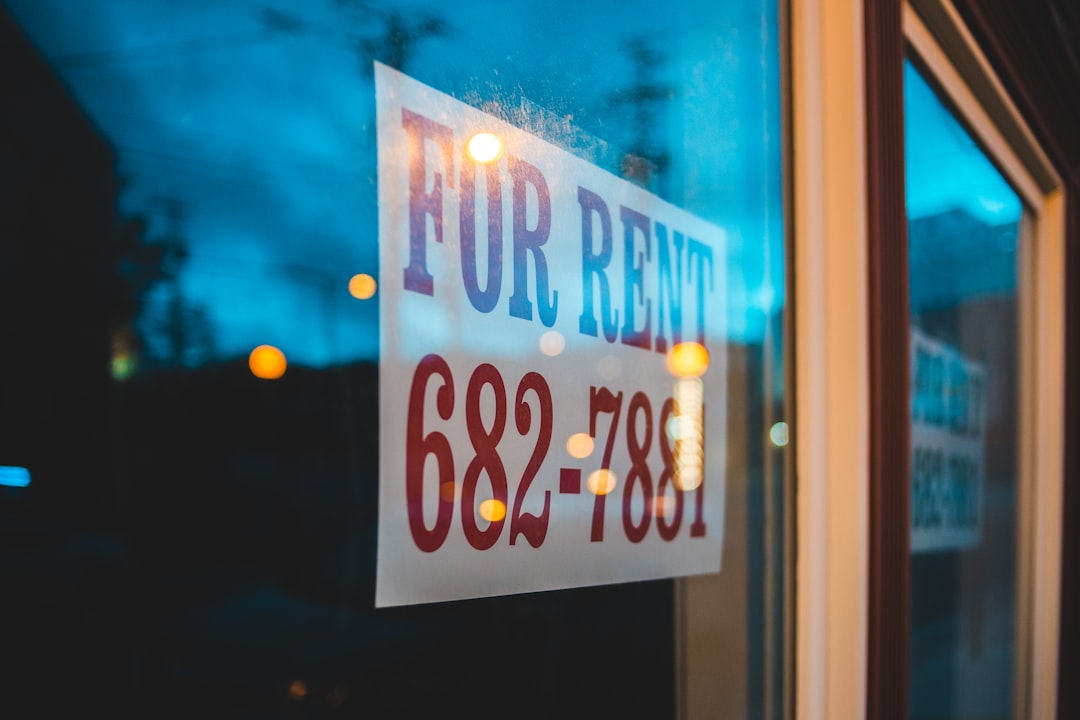

Engage prospects with a scan and streamline customer engagement with FREE QR code marketing tools by Sona – no strings attached!
Create a Free QR CodeFree consultation

No commitment

Engage prospects with a scan and streamline customer engagement with FREE QR code marketing tools by Sona – no strings attached!
Create a Free QR CodeFree consultation

No commitment
QR codes in marketing have become a powerful tool for bridging offline engagement with online action in today's digital landscape. For rent-to-own real estate services, QR codes offer a seamless and effective way to capture qualified buyer and seller leads without complicated setups or extra steps. In an industry where educating and guiding potential clients through complex decisions, from exploring rent-to-own listings to understanding contract terms, reducing friction is paramount.
Rent-to-own real estate providers face ongoing challenges, such as educating clients on financing, capturing high-intent leads, ensuring contract transparency, and offering instant resources across offline and online touchpoints. High-value prospects are often missed when initial interest goes unidentified or untracked, particularly when it does not result in a form submission. With QR codes, agents and marketers can transform every physical interaction, from yard signs and brochures to open houses materials and mailers, into measurable, digital opportunities for lead nurturing and qualification. The result is fewer missed opportunities, cleaner data, and faster follow-up.
Leveraging QR codes drives both engagement and conversion, while delivering data-driven insights that reshape how professionals in rent-to-own real estate build relationships and adapt to changing market conditions. By automating lead capture, enhancing CRM visibility, and connecting offline actions to digital journeys, QR campaigns enable teams to accelerate the path from initial interest to qualified lead. This allows organizations to respond more quickly than competitors, reduce delays, and optimize marketing spend with actionable attribution data.

In rent-to-own real estate, marketers often encounter the frustration of missing high-value prospects who interact with physical promotions such as signs or flyers without leaving their contact details. Traditional paper sign-up sheets, printed brochures, and manual qualification processes are prone to errors and delays, often leaving agents unaware of potential buyers or sellers until much later if ever. QR codes bridge this critical gap by creating a direct path from offline touchpoints to digital lead capture workflows that sync with your CRM in real time.
When designed and deployed with intent, QR codes make every impression actionable. A walk-by prospect who sees a yard sign can immediately scan to view terms, explore eligibility requirements, or book a virtual consult. An open house guest can check in digitally, receive a custom financing guide, and trigger an automated follow-up sequence. These improvements replace outdated workflows, such as manual registration sheets or static pamphlets, with instant, trackable engagement that raises the quality and speed of lead qualification.
Modernizing lead capture with QR-driven strategies improves CRM completeness, reduces data entry errors, and surfaces engagement signals immediately. For growth-minded rent-to-own teams, these advantages compound, enabling better prioritization, stronger conversion rates, and more transparent marketing performance.

Rent-to-own journeys are filled with moments where prospects hesitate, uncertain about financing qualifications, contract clauses, or the steps required to move forward. Prospects often encounter print materials, flyers, or signage with no clear next step, then disengage before an agent can connect with them. QR codes solve this by turning passive interest into a guided digital action at the exact moment attention is highest.
The flexibility and trackability of QR experiences are especially important for rent-to-own, where details change frequently and education is ongoing. You can update destinations without reprinting materials, deliver context-specific resources, and see which assets produce real leads. For inspiration, browse real estate QR ideas. This transforms high-cost physical placements into measurable, optimizable entry points to your digital funnel.
For example, adding QR codes to open house packets can channel anonymous visitors into a digital funnel, where they receive a tailored follow-up sequence based on the property, their timeframe, and their financing readiness. This kind of immediate, data-rich interaction strengthens prioritization and drives more timely conversations.
Rent-to-own teams need flexible tools that integrate with the way they already work. QR codes support multiple formats and actions, each suited to a moment in the client journey. Choosing the right format for the right touchpoint reduces friction and improves conversion quality.
While there are many QR types, a few stand out for rent-to-own. Dynamic web links allow you to direct prospects to evolving resources and track performance. vCards reduce friction when prospects want to save an agent’s contact info. Forms and SMS or email links help capture intent in fewer steps and shift engagement from passive to actionable.
Dynamic QR codes are typically best for rent-to-own because terms, inventory, and collateral change frequently. Static codes still have a place for evergreen materials such as corporate brochures or general FAQs, but most lead-focused campaigns benefit from dynamic links and analytics.

A persistent challenge in rent-to-own marketing is failing to capture interest in the moments that matter most. Prospects often view signage or printed materials, then postpone action until later, which reduces recall and conversion rates. Placing QR codes strategically in high-traffic and high-intent contexts ensures that curiosity can become contact and contact can become a qualified conversation.
Think about where your audience encounters your brand in the real world. If someone is standing in front of a property sign, flipping through a brochure after dinner, or attending a first-time buyer workshop, they are actively engaged. QR codes embedded in these contexts reduce steps, clarify next actions, and capture information at the point of interest.
Strategic placement supports smarter spend. You can monitor which placements generate the highest scan-to-lead rate, identify underperforming materials, and double down on the channels that produce results.

Rent-to-own transactions require education, trust, and timely follow-up. QR codes enable experiences that simplify complex decisions, reduce friction in qualification, and make every interaction measurable. The following use cases are common starting points that deliver rapid impact.
Start by aligning each use case with a clear outcome. If a code on a yard sign connects to a property details page plus a short consultation form, your outcome might be faster booking and more qualified showings. If a code in a financing guide links to an eligibility quiz, your outcome might be better intent scoring and more relevant outreach. For a quick overview, see real estate QR codes.
Over time, add more targeted flows, such as QR codes on rent receipts that open maintenance requests or upgrade offers, or codes on closing packets that invite feedback and referrals. These interactions extend the lifecycle value of each client and enhance your understanding of what drives retention and upsell.
Each scan is a tiny but powerful signal. It reveals a prospect’s interest, the context in which they engaged, and the content that moved them to act. By deploying codes across the journey and tagging each by location, campaign, and intent, you can automatically segment audiences and deliver personalized follow-up that fits where the buyer is in the process.
Segmentation matters because rent-to-own buyers and sellers do not all want the same things at the same time. Someone scanning a yard sign may be at the discovery stage, while someone scanning a contract explainer might be near conversion. Mapping each code to a specific stage and use case ensures your CRM and ad platforms serve relevant content that advances the conversation rather than restarting it.
With a platform like Sona QR, each code becomes a smart entry point that captures data beyond the click. You can orchestrate email, SMS, and ad retargeting automatically, guiding renters and sellers from first scan to signed agreement. For step-by-step tactics, see Sona’s Playbook intent-driven retargeting.
Disconnected print, digital, and live event campaigns create inconsistent experiences and incomplete attribution. QR codes connect these channels, turning static assets into dynamic gateways and revealing how offline interactions contribute to pipeline. By centralizing QR creation and tracking, you gain a single view of performance and a reliable way to test and optimize.
Think of QR codes as the connective tissue in your marketing stack. They link yard signs to property pages, mailers to booking forms, event signage to check-ins, and business cards to vCards and consultation schedulers. This connection reduces steps for prospects and creates measurable checkpoints for your team.
QR codes serve as the offline onramp to your digital marketing engine and unlock a new layer of measurement across previously opaque channels. With a centralized platform like Sona QR, you can manage all codes, monitor performance, and sync scan data with your CRM and ad platforms to inform continuous optimization.
Launching a QR campaign for rent-to-own real estate services is straightforward if you follow a structured plan. The steps below turn strategy into execution and execution into measurable results. Build your first campaign around one or two high-impact placements, then expand as you learn.
Keep each step focused on a clear business outcome. For instance, you might aim to increase open house sign-ins by 30 percent, reduce time-to-follow-up to under one hour, or double the number of consultation bookings from direct mail.
Follow this checklist to strengthen all stages of lead capture and follow-up. Document your initial benchmarks, set a schedule for optimization, and add new placements as the data shows where expansion will drive the highest return.

If you cannot connect offline activity to revenue, you are forced to rely on guesswork. Advanced QR tracking solves this problem by linking real-world engagements to digital behaviors and pipeline outcomes. For context on measuring offline impact, see Sona’s blog on offline attribution. When every scan is traceable and attributable, you can finally justify investments in print, signage, and events with confidence.
Effective tracking begins with unique codes per asset, consistent naming conventions, and standardized UTM parameters. It continues with CRM integration so your team can route leads, score intent, and measure progression from scan to inquiry to contract. This creates a continuous feedback loop where creative, placement, and messaging are optimized based on performance rather than intuition.
Sona QR captures real-world engagement and gives you a dashboard view of performance. Sona.com extends that visibility into end-to-end attribution by resolving anonymous scans to known contacts over time. For more on this process, see Sona’s blog on account identification. Together, they help you move QR from a convenience feature to a core component of performance marketing.
As your QR program matures, the next gains come from better segmentation, tighter integrations, and creative deployments that meet prospects where they are. Focus on maintaining consistent standards while experimenting with new placements and messages based on what your data shows.
Pair your QR program with staff training and clear on-site signage that explains the benefit of scanning. Many prospects still ask, “What happens if I scan?” Make the value explicit and immediate: “Scan to see if you qualify,” “Scan to book a tour in under a minute,” or “Scan for a contract explainer.”
Creative examples to try include adding QR codes to rent payment receipts for maintenance requests or upgrade offers and placing QR stickers on model home fixtures that link to renovation or appliance packages available in a rent-to-own agreement. Each scan can reveal new opportunities to engage, serve, and upsell.
QR codes are more than digital shortcuts. They close longstanding gaps in attribution, qualification, and engagement. For rent-to-own real estate services, QR workflows turn every physical surface into a digital entry point and every moment of interest into a measurable step forward. The ability to connect scans to pipeline outcomes helps you invest in the creative, channels, and messages that demonstrably drive results.
Here is what robust QR strategies deliver when executed well:
Rent-to-own real estate services are undergoing rapid digital transformation. Teams that bridge physical interactions with data-powered digital journeys will capture more qualified demand, respond faster, and build trust with transparent resources. With tools like Sona QR and Sona.com, you can create, manage, and track QR experiences at scale, unify analytics across channels, and link scans to revenue. Start creating QR codes for free: Start creating QR codes for free.
QR codes have transformed rent-to-own real estate services from traditional lead generation methods into dynamic, measurable growth engines. Whether it’s capturing qualified tenant-buyers, streamlining property tours, or delivering personalized follow-ups, QR codes replace cumbersome paperwork with instant, mobile-friendly actions—capturing real-time data that turns every listing into a powerful conversion tool. Imagine knowing exactly which property flyers or open house materials drive the most serious inquiries—and acting on that insight immediately.
With Sona QR, you can create dynamic, trackable QR codes in seconds, update your marketing campaigns on the fly without reprinting, and connect every scan directly to your lead pipeline. No wasted effort, no missed opportunities—just smarter, more profitable rent-to-own campaigns that accelerate customer acquisition and close deals faster. Start for free with Sona QR today and turn every scan into a conversation, a qualified lead, or a signed agreement.
The rent-to-own process allows prospective buyers to rent a property with the option to purchase it later, involving steps like exploring listings, understanding contract terms, and qualifying financially.
Benefits include accessible homeownership paths and flexible financing, while risks involve complex contract terms and the need for clear education to avoid misunderstandings.
You can find suitable rent-to-own properties by using QR codes on signage, brochures, and online listings to quickly access updated property details, eligibility requirements, and book consultations.
Key considerations include understanding financing qualifications, contract clauses, eligibility criteria, and ensuring transparency in all terms, often facilitated through educational resources linked via QR codes.
Qualification involves meeting eligibility criteria such as credit and income standards, which can be checked instantly through QR code-linked calculators and quizzes provided by rent-to-own services.
Use Sona QR's trackable codes to improve customer acquisition and engagement today.
Create Your FREE Trackable QR Code in SecondsJoin results-focused teams combining Sona Platform automation with advanced Google Ads strategies to scale lead generation

Connect your existing CRM

Free Account Enrichment

No setup fees
No commitment required

Free consultation

Get a custom Google Ads roadmap for your business






Launch campaigns that generate qualified leads in 30 days or less.
